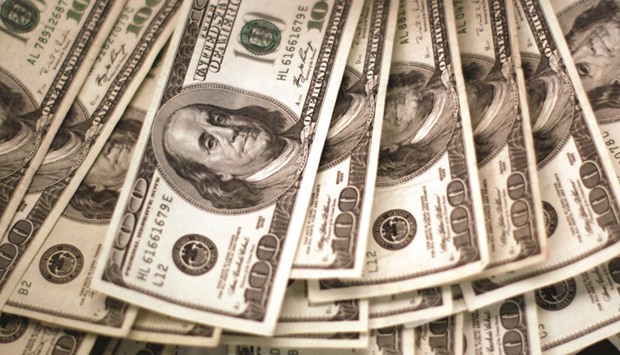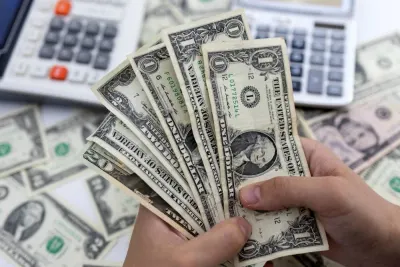The dollar rally has peaked and US yields are headed lower as the Federal Reserve limits itself to one interest-rate increase per year, according to one of the world’s largest money managers.
The Fed will only tighten to a terminal rate of about 1% “tops,” with the next hike coming in December, Nicholas Gartside, the London-based chief investment officer for fixed-income at JPMorgan Asset Management, said in an interview in Tokyo last week.
That “glacial” pace of policy-tightening means the dollar’s world-beating rally since mid-August is over, and the benchmark Treasury 10-year yield is likely to head towards 1.5% over the coming year, he said.
“If you think what the supports for the dollar were, they were that US growth was stronger, and the Federal Reserve was going to be a lot more aggressive,” Gartside said on October 20 at JPMorgan’s Tokyo office.
“The growth differential has disappeared, and you’ve not really got a big difference any more in terms of central-bank policies diverging. Add that together and it’s tricky to argue that the dollar should be stronger.”
Many investors and analysts have had to adjust their outlooks for the direction of global monetary policy this year, with the Fed so far refraining from additional tightening after liftoff from near-zero rates in December last year.
While the dollar has climbed at least 0.7% against all its developed-market peers since August 16 amid strengthening bets the US central bank will indeed raise borrowing costs again by year-end, it was the worst performer this year up to that point, after the pound.
Along with longer-dated Treasuries, the $1.6tn money manager recommends sovereign debt from other so-called dollar bloc countries including Australia, New Zealand and Canada, as well as bank debt and junk bonds in Europe, and local-currency emerging-market bonds. Those securities offer high yields and the potential for capital gains, while continued loose monetary policy globally caps yields and keeps default risk low, Gartside said.
“The ability to pay is really helped by ultra-low interest rates,” he said. “We’ve got reasonably high durations already, and we’re certainly maintaining that.”
JPMorgan Asset is among the host of investors who have helped push durations to unprecedented highs in many sovereign-debt markets.
While longer durations multiply returns, they also amplify losses when yields rise. Goldman Sachs Group analysts have warned that bondholders now risk the worst losses in history.
Thirty-year Treasury yields have jumped about 22 basis points, or 0.22 percentage point, this month to 2.54%, on track for their biggest increase since June last year, amid a rebound in crude oil prices that has ignited speculation of a pickup in inflation worldwide. Even so, Gartside is sanguine.
“Headline inflation has gone up because commodity prices have gone up, but unless we see wage inflation, our view is that it’s very transitory,” he said. Globally, “you’ve got an environment of very pedestrian growth – it seems very entrenched going forward – so it’s very difficult to see what breaks that logjam in terms of really getting growth going a lot more.”
“The dollar rally may take a breather for now,” said Valentin Marinov, head of Group-of-10 foreign-exchange strategy in London at Credit Agricole’s corporate and investment-banking unit.
Marinov’s study of the performance of a dollar trade-weighted index just before US presidential elections in the last 40 or so years “found that the dollar tends to under- perform just before the vote.
This could mean that investors will wait for the outcome” of the November 8 elections.
Gartside sees the risk of recessions in the US and Europe as very low, emboldening him to recommend junk bonds. He also says European lenders “in aggregate, are in good shape,” and he particularly likes bank debt from Scandinavia, Switzerland, and the UK.
Gartside favors superlong Australian and New Zealand government bonds amid the potential for further rate cuts, while hedging currency exposure. He says emerging markets “are definitely through the worst,” preferring local-currency obligations on his view that the dollar will weaken.
He pointed specifically to Brazil, Colombia, Indonesia, Malaysia, Mexico, Russia and Turkey as looking “very, very attractive.” A JPMorgan gauge of local-currency emerging-market debt is on track for an 11% gain this year.
“Now is probably the most exciting time ever to be a global fixed-income investor: gigantic markets, a better country mix, and you’ve got so many sectors,” Gartside said. “We’re still in the sweet spot for bonds.”

The dollar rally has peaked and US yields are headed lower as the Federal Reserve limits itself to one interest rate increase per year, according to JPMorgan Asset Management


